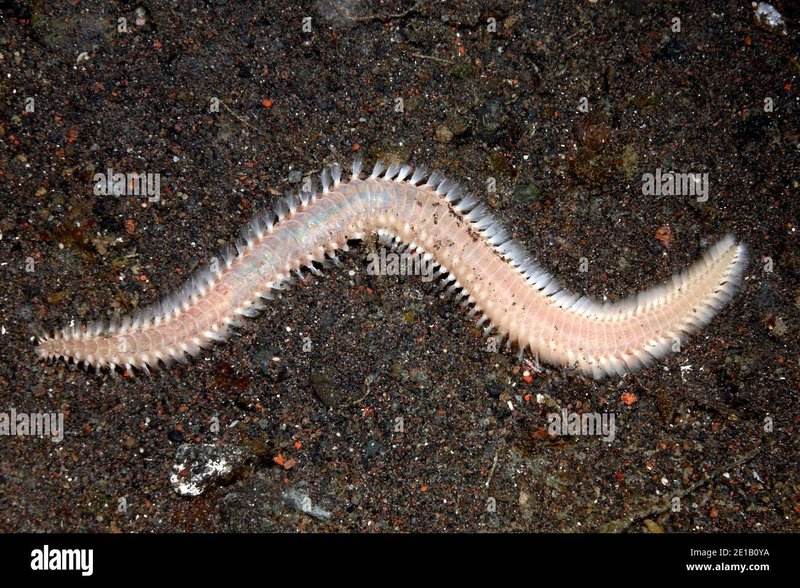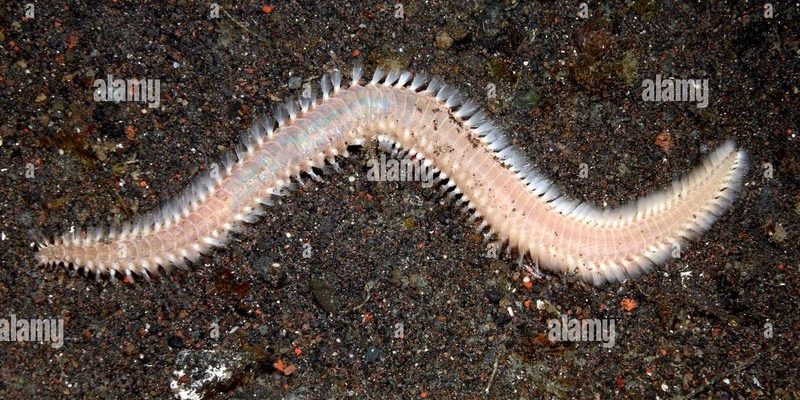
Now, you might be wondering if these worms have something more than just a unique look. Do bristle worms deliver venomous stings? The simple answer is yes, but let’s unpack that a bit more. While they’re not out to get you, understanding their potential for causing irritation can help you enjoy your ocean adventures a bit more safely.
What Are Bristle Worms?
Bristle worms belong to the class *Polychaeta*, which includes a diverse group of segmented worms. These creatures typically live in marine environments, often hiding in rocky crevices or burrowing into the sand. They have long, slender bodies covered in tiny, hair-like bristles called *setae*. It’s these setae that can sometimes cause trouble if you’re not careful. They’re part of the worm’s defense system, acting like tiny spears that can irritate the skin of anyone who gets too close.
You can find bristle worms in different sizes, with some species growing up to several feet long! Despite their impressive length, they’re generally harmless to humans. However, their setae can leave a painful sting if you’re not mindful. Think of them like a prickly cactus—beautiful to look at from a distance, but not so fun to touch.
Do Bristle Worms Have Venom?
It’s important to clarify that bristle worms do not have venom like some other marine creatures, such as jellyfish or certain species of fish. Instead, they possess *irritating setae* that can cause mechanical injury. Imagine accidentally brushing against a thorny bush; while the thorns can hurt, they aren’t injecting anything into your skin. Similarly, when bristle worms’ setae come into contact with your skin, they can break off and cause irritation or allergic reactions.
The sensation varies from person to person. Some might feel only a mild itch, while others could experience more intense pain or a rash. For those with sensitive skin, it’s wise to keep a safe distance from these creatures. They might not be venomous, but they can pack quite a sting!
How to Identify Bristle Worms
Identifying bristle worms can save you from unwanted encounters. These worms come in various colors, including brown, green, or even bright shades like pink and red. Look for their distinct segmentation and the bristles protruding from their body. If you see a worm that looks like a tiny sea serpent and has fuzzy hair, you’re likely looking at a bristle worm.
When spotting one, pay attention to its habitat too. Bristle worms are often found in sandy or muddy substrates, hiding in crevices or burrowing into the sand. They’re not the type to hang out in the open for long, so if you see one, consider it a rare moment.
What Happens if You Get Stung by a Bristle Worm?
If you accidentally touch a bristle worm and get stung, don’t panic! The first step is to wash the affected area with soap and water to remove any debris or broken setae. This helps reduce the risk of an allergic reaction or infection. It’s like cleaning a scratch; the sooner you treat it, the better!
If you feel pain or develop a rash after the encounter, applying a cold compress can help alleviate discomfort. Over-the-counter antihistamines or hydrocortisone cream might also be useful if the itching or swelling persists. Just remember, everyone’s body reacts differently, so it’s best to monitor your symptoms.
Are Bristle Worms Dangerous?
For most people, bristle worms are not considered dangerous. They’re more of a marine curiosity than an actual threat. While their stings can be painful, they usually don’t cause severe reactions. However, if you have known allergies to other marine creatures, it’s always good to exercise caution.
Furthermore, bristle worms play a crucial role in their ecosystems. They help break down organic material, acting as natural recyclers of the ocean floor. By being mindful of their environment and understanding their behavior, we can appreciate these weird little creatures without getting too close for comfort.
Staying Safe Around Bristle Worms
If you enjoy exploring marine environments, here are some tips for avoiding an unpleasant interaction with bristle worms:
- Wear gloves: If you’re curious and want to handle one, gloves can provide a protective barrier.
- Keep a safe distance: Observing them from afar helps ensure you don’t accidentally make contact.
- Educate others: Share what you’ve learned about bristle worms with friends who enjoy beach outings.
- Be cautious: If you’re working in tidal pools or digging in the sand, be mindful of your surroundings.
Taking these precautions can make your ocean adventures more enjoyable and safe.
In summary, bristle worms are fascinating, albeit prickly, marine creatures. While they do not deliver venomous stings, their setae can cause irritation if you touch them. Keeping a respectful distance and being aware of your environment can help you appreciate these unique worms without any unfortunate encounters.
So, the next time you’re near the beach or exploring tide pools, remember that bristle worms are part of the ocean’s wonders. They may not be the most glamorous sea life, but they play an essential role in their ecosystem. And who knows? Maybe you’ll spot one at just the right moment—just be sure to admire it from a safe distance!

